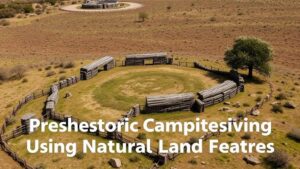Identifying Visual Wordplay in Treasure Riddles and Maps
Identifying Visual Wordplay in Treasure Riddles and Maps
Visual wordplay in treasure riddles and maps is a captivating intersection of linguistics, art, and puzzle-solving. This article aims to dissect the mechanisms behind these intriguing devices, elucidating how they function and how one can identify them. Through the exploration of various examples, we will enhance our understanding of how visual cues and language interweave within the context of treasure hunting.
The Nature of Visual Wordplay
Visual wordplay involves the clever manipulation of visual elements and language to create a dual-layer of meaning. This technique is particularly prominent in treasure maps and riddles, where imagery and text unite to lead the seeker toward hidden treasures or locations. For example, consider a riddle that reads, Where the sun rises, on the path of the wood, look for the stone beneath the roots. The imagery evoked in the text, concerning positioning and natural elements, suggests a specific, though metaphorical, location.
Treasure maps and riddles often deploy visual cues–symbols, illustrations, and typography–that serve as essential signposts for the explorer. Unlike straightforward directions, these elements necessitate interpretation, thus integrating creative thinking into navigation. In particular, treasure maps utilize shorthand symbols to represent landmarks, treasure locations, and drop points. On the other hand, riddles typically pose linguistic challenges that require understanding both the denotation and connotation of words.
Examples of Visual Wordplay in Popular Culture
Examining notable examples of visual wordplay provides key insights into prevalent strategies. One significant illustration arises from the childrens story Where the Wild Things Are by Maurice Sendak. Although it is primarily a narrative, the pivotal map within visually depicts the journey and character evolution, turning the adventurous exploration into a metaphor for personal growth.
- The pirate treasure maps, often depicted in media like Pirates of the Caribbean, use exaggerated landmarks and symbols to suggest hidden locations. The map may include items like skulls and crossbones for danger or specific illustrations to indicate paths.
- In The Goonies, the character Data constantly engages with visual wordplay through devices like a rich stuff map. His interpretation intertwines poetic phrases and illustrations to yield directions and clues about hidden treasures.
Common Techniques in Visual Wordplay
Identifying and interpreting visual wordplay involves recognizing several common techniques:
- Metaphorical Language: Oftentimes, treasure riddles employ metaphorical language that requires the solver to think beyond literal meanings. For example, Follow the stream where the whispers of the ancients are may refer to an actual stream or a place laden with history.
- Symbolism: Treasure maps abound with symbols–each carrying its own meaning. A compass might suggest direction, whereas an ‘X’ often indicates treasure. Understanding these symbols is crucial for accurate interpretation.
- Spatial Relationships: Many visual riddles make use of spatial dynamics; for instance, positioning objects at specific angles or distances that align with the narrative. This is noticeable in maps where the layout can hint at the order of seeking.
Real-World Applications and Case Studies
Visual wordplay finds practical application in various fields, such as education, cartography, and even branding. In education, teachers use riddles and maps to stimulate critical thinking and engagement among students. Take, for example, gnomes on an educational treasure map that guide learners to various subjects in a classroom. visual elements combined with clever wordplay help reinforce learning objectives.
Cartographers utilize wordplay in their designs to engage users, encouraging exploration and adventure through a blend of art and information. For example, National Park maps often feature illustrations of local wildlife and geography, creating a narrative that mirrors the natural journey one will undertake.
Conclusion and Actionable Takeaways
Identifying visual wordplay in treasure riddles and maps requires analytical skills, creativity, and an understanding of language and symbols. As seen in various examples, the intersection of imagery and text opens pathways not just to locations but to deeper meanings and experiences.
To sharpen your ability to discern this form of wordplay:
- Practice analyzing maps and texts for synergies between imagery and language.
- Engage in puzzles and treasure hunts, paying attention to hidden messages.
- Try creating your own treasure riddle or map, incorporating visual and linguistic elements.
As you delve deeper into the enchanting realm of visual wordplay, remember that the journey of exploration is as rewarding as the discovery itself.



